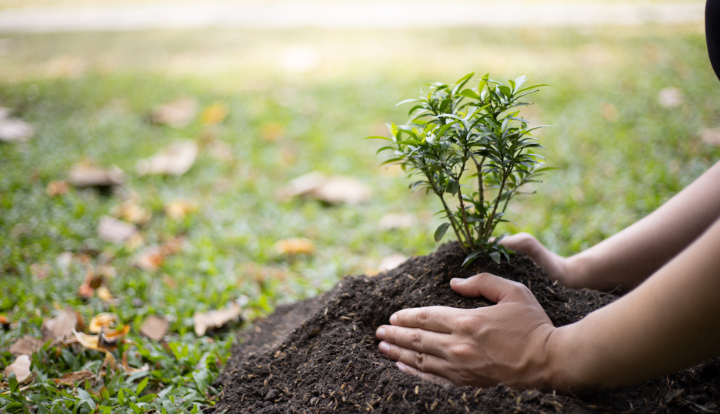
Best Practices for Transplanting Trees and Shrubs
Trees and shrubs are an essential part of any landscape, providing beauty, shade, and privacy. However, occasional relocation may be necessary to improve their health, accommodate landscaping changes, or provide a more suitable environment.
Transplanting is a delicate process that requires a methodical approach. Let's discuss what transplanting is, why you might transplant, and the best practices to follow for a successful transition.
What is Transplanting?
Tree transplanting refers to the process of relocating a tree or shrub from its current location to a new one. This procedure involves carefully excavating the plant, moving it to the desired spot, and replanting it.
It's a delicate operation, as exposing the roots of an established plant can subject it to significant stress. To ensure the survival of the plant after the transplant, it's crucial to perform this operation with proper care and precision.
Reasons to Transplant
A tree or shrub can be transplanted for many reasons. Here are some of the most common reasons why transplanting a tree or shrub is necessary:
- Location Adjustment: One of the most common reasons for transplanting is to change the location of a tree or shrub. Perhaps it was originally planted in an area where it has outgrown its space, or it needs to be moved to a more suitable location for its growth and health.
- Landscape Design: Transplanting can be part of a landscape redesign. You may want to reconfigure your garden or yard and move existing trees or shrubs to create a more aesthetically pleasing layout.
- Development or Construction: If you're undertaking a construction project or making changes to your property, transplanting can help protect valuable trees and shrubs from damage. This is especially important for mature or valuable species.
- Improving Health: If a tree or shrub is not thriving in its current location due to poor soil, drainage issues, or competition with other plants, transplanting it to a more suitable environment can improve its overall health and growth.
- Saving Historical or Sentimental Trees: Sometimes, people want to preserve trees or shrubs that have sentimental value or historical significance. Transplanting allows these plants to continue thriving in a new location.
Best Transplanting Practices
Before transplanting your tree or shrub, follow these best practices to ensure success:
- Test the Soil: Before transplanting a tree or shrub, it's essential to understand the soil conditions in both the current and new locations. Test the soil for pH, nutrient levels, and drainage. This will help you determine if any soil amendments are necessary to ensure the plant's success in its new home.
- Select the Proper Location: Take into account both the present and future dimensions of your plant, ensuring it will have ample space as it matures. Evaluate the presence of nearby buildings, other plants, or structures that may obstruct sunlight or hinder growth. Assess whether the location provides adequate sunlight or shade in alignment with your plant's requirements. If irrigation or a hose is utilized for watering, confirm that sprinklers or hoses can effectively reach the designated transplant area.
- Transplant at the Right Time: Timing is crucial when it comes to transplanting your tree or shrub. Fall is an ideal season for both planting and transplanting due to the soil remaining warm from summer and the cooler temperatures placing less stress on the plant. Another favorable time is spring, as it allows roots to establish themselves in the surrounding soil before the stress of high temperatures sets in.
- Avoid Transplanting Large Plants: If possible, avoid transplanting very large and established trees or shrubs. Smaller to medium-sized plants tend to adapt more easily to transplanting than larger ones. Smaller root systems are less likely to be damaged during the transplanting process. Additionally, smaller plants require less time and effort to establish themselves in their new location.
- Dig Wide, Not Deep: When preparing the new planting hole, make it wide and shallow rather than deep. The width of the hole should be at least two to three times the diameter of the root ball or the spread of the plant's roots. This allows the roots to spread out more easily and establish themselves in the new soil.
- Loosen the Root System: Gently loosen the roots of the plant before transplanting. This helps prevent the roots from becoming root-bound and encourages them to grow outward into the surrounding soil. Carefully untangle any circling or tangled roots to encourage healthy root development.
- Water Consistently: Adequate watering is crucial both before and after transplanting. Water the plant thoroughly a day or two before transplanting to ensure it's well-hydrated. After transplanting, maintain consistent watering to help the plant establish itself in its new location. Keep the soil consistently moist but not waterlogged, especially during the first growing season.
After the process of transplanting, allow your plant to have time to adjust to its new location. During the first year of transplanting, the roots will be far more active than the parts of the plant that are visible above ground.
Get Expert Help With Your Trees and Shrubs with Safari Tree
Transplanting trees and shrubs is an important part of maintaining a healthy landscape, but it can be a complex process. If you are looking for expert help with tree transplanting, or any other aspect of tree care, Safari Tree is here for you.
Our team of experienced and certified arborists can provide you with the guidance and support you need to keep your trees healthy and thriving. Contact us today for a free quote.




